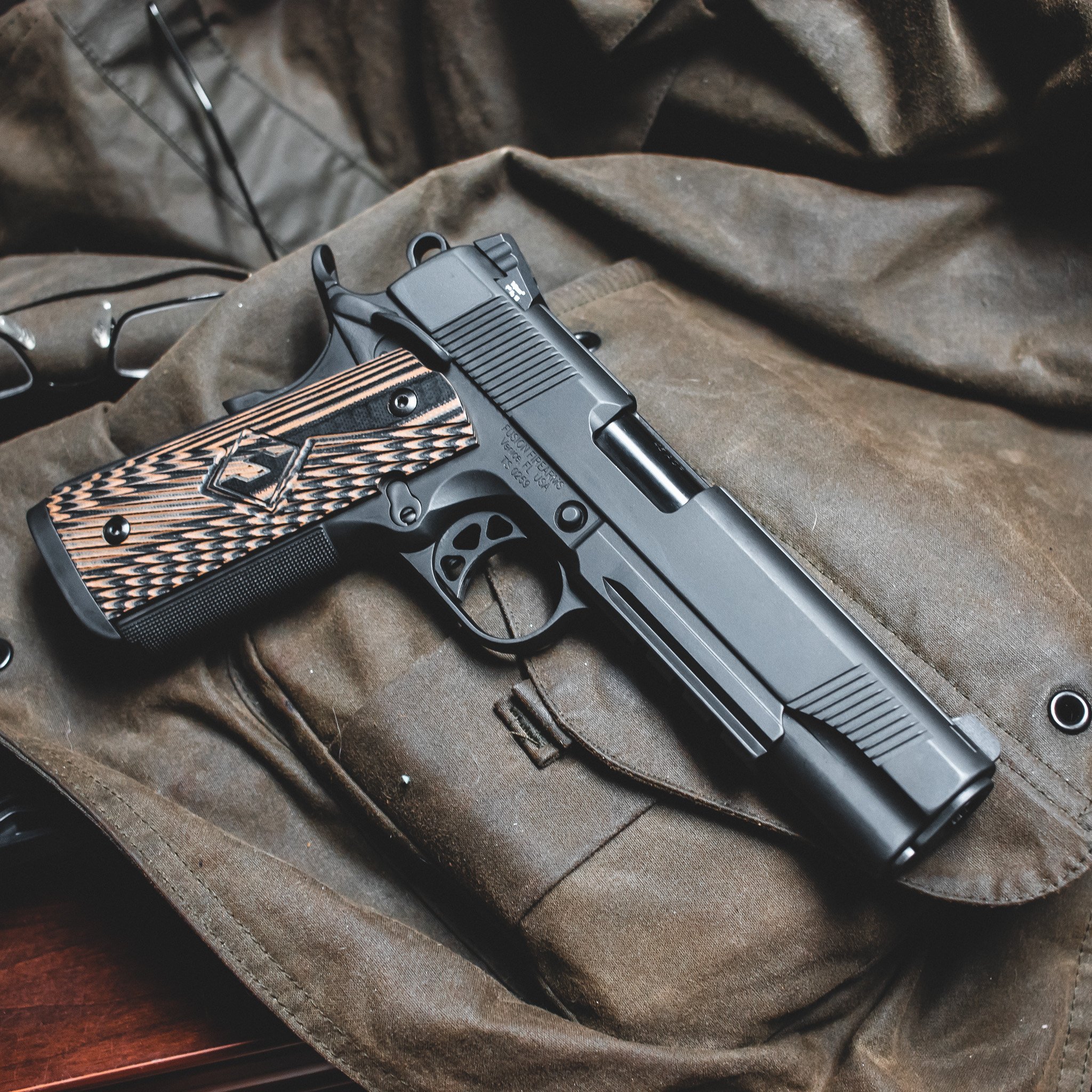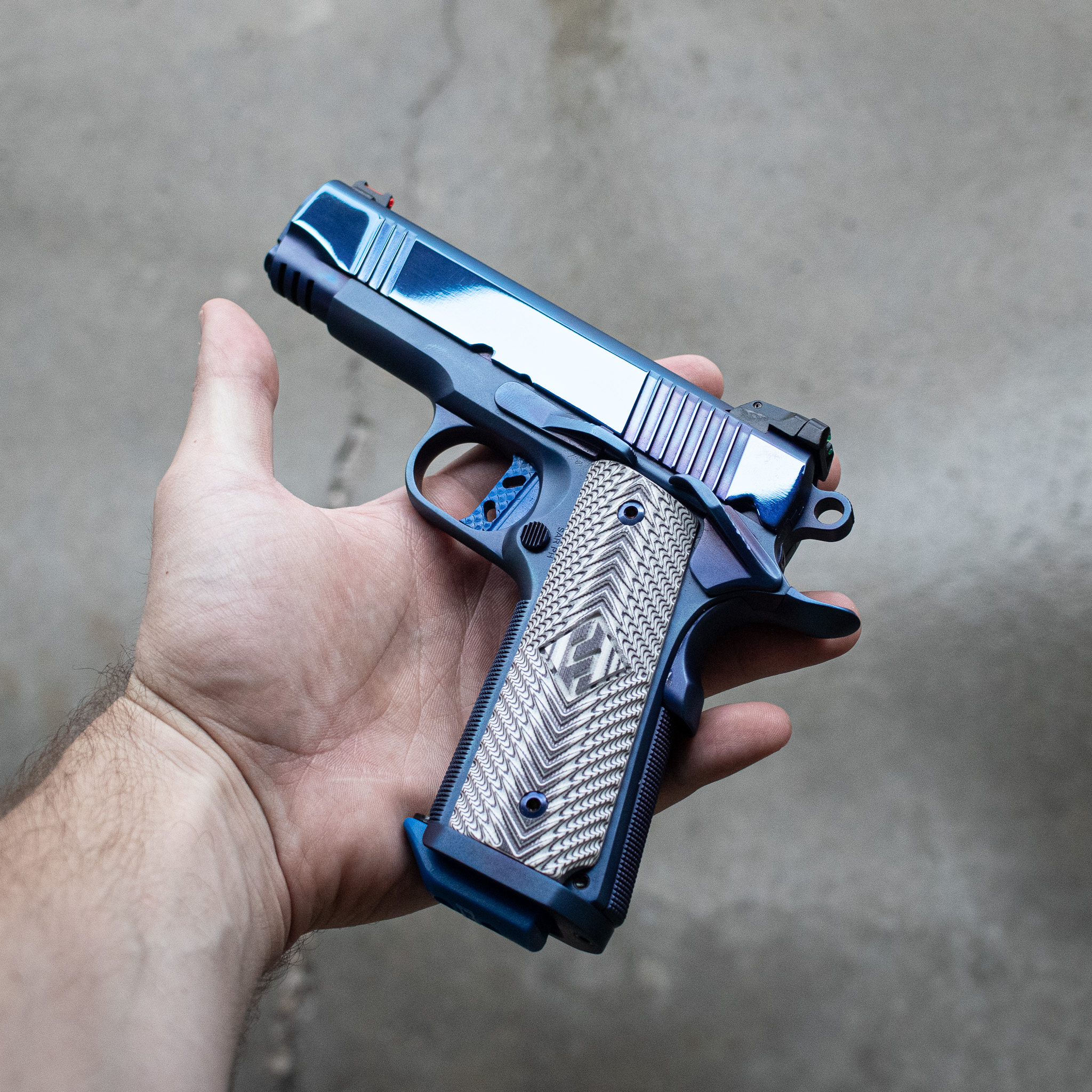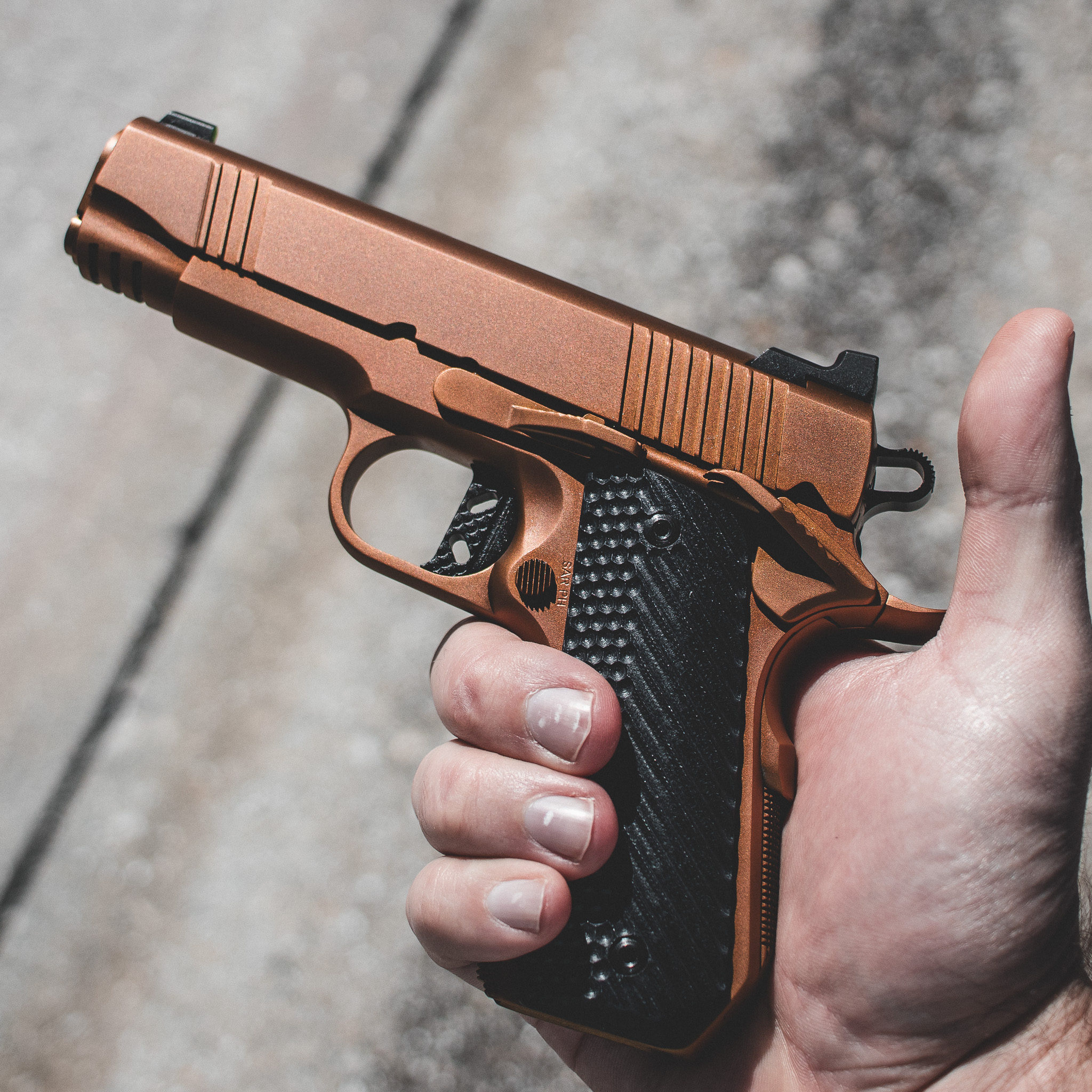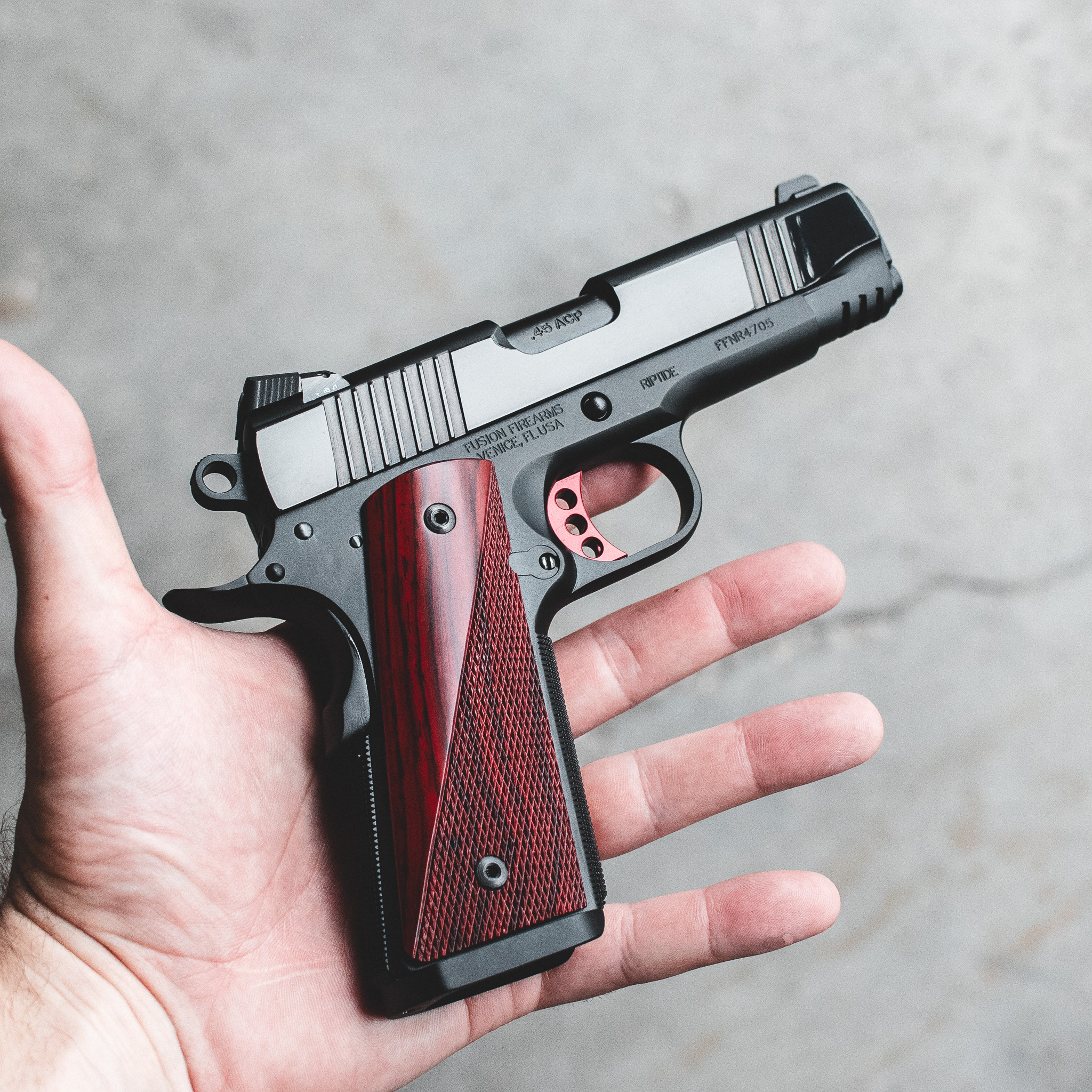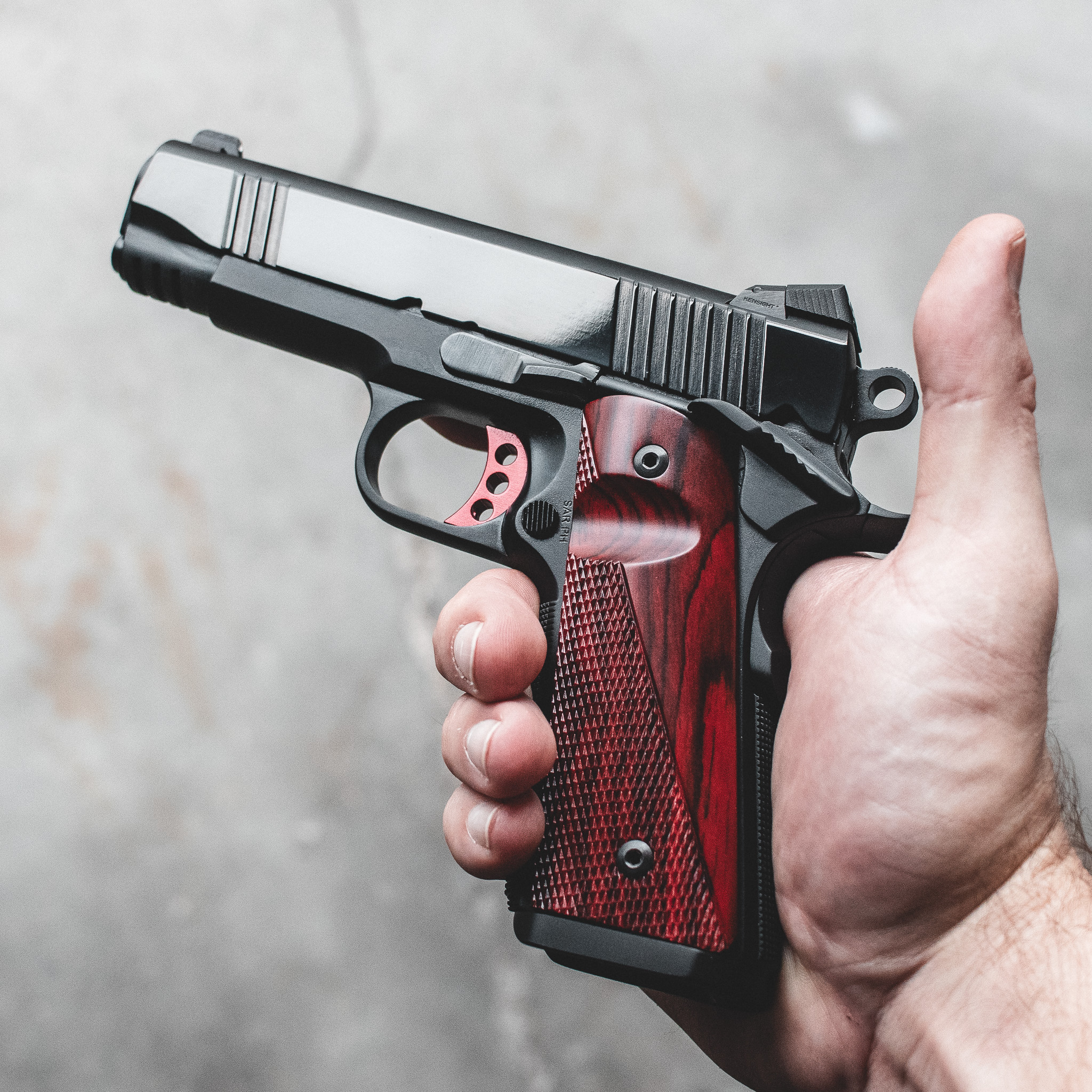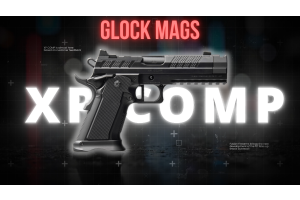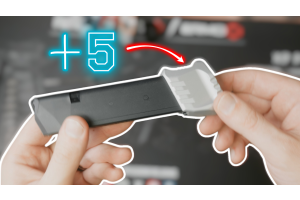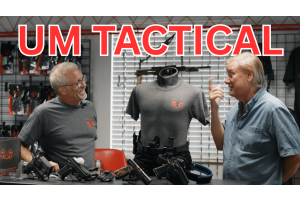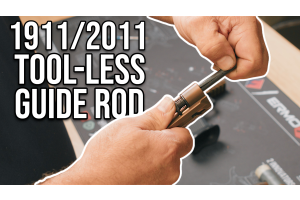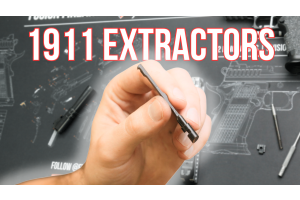What is a Semi Automatic Pistol: Understanding the Mechanics of Modern Firearms
0%
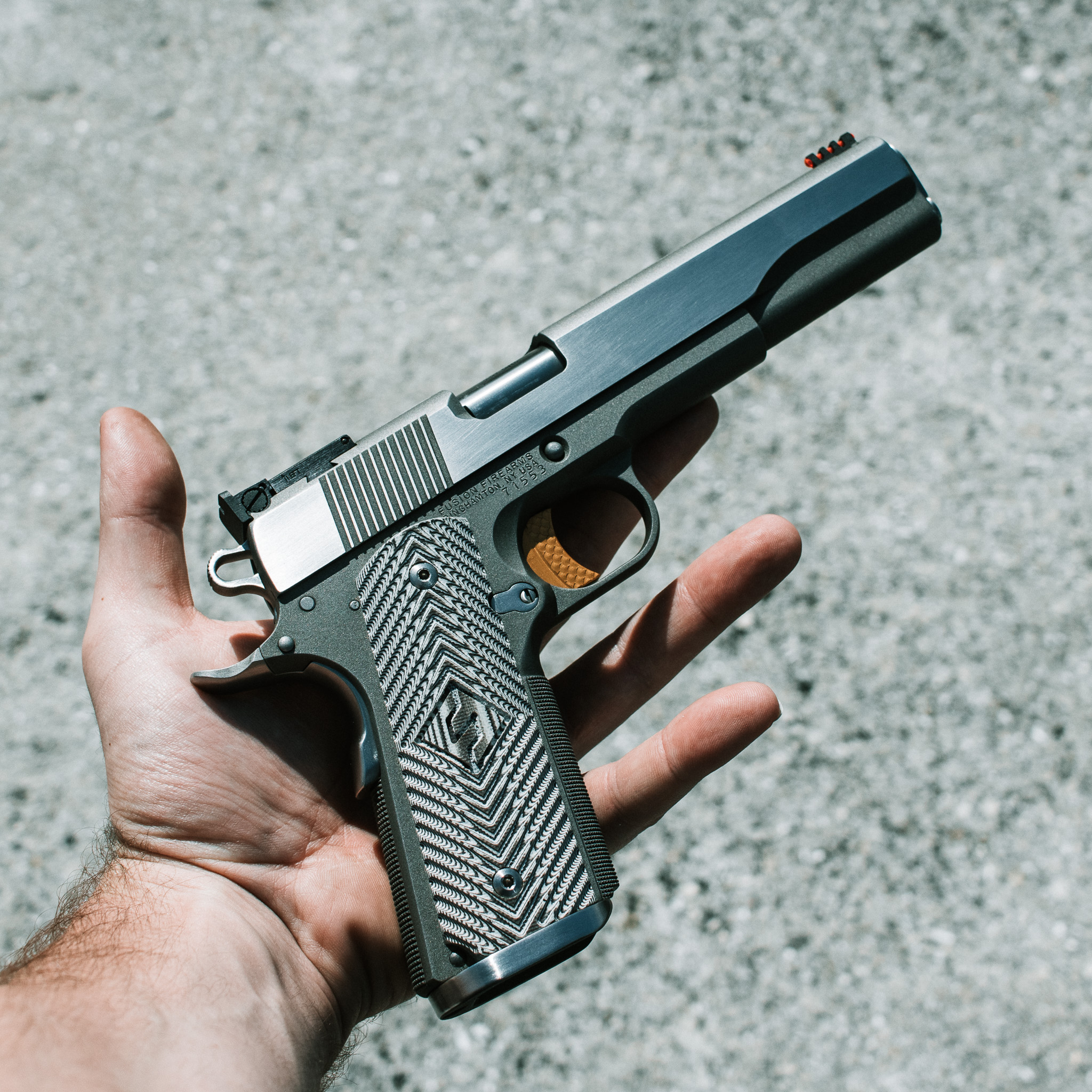
The world of firearms can be intimidating, especially for those unfamiliar with the various terms and mechanisms. However, understanding the basics of modern firearms, such as “what is semi automatic pistol,” can be both enlightening and empowering. In this blog post, we will delve into the complex world of semi-automatic pistols, exploring their inner workings, key components, and the different types of actions these firearms employ. By the end, you’ll be armed with the knowledge needed to navigate the intricate landscape of semi-automatic pistols with confidence.
Semi-automatic pistols are ubiquitous in today’s society, used by law enforcement, military personnel, and civilians alike for self-defense and sport shooting. An understanding of how these firearms function, along with their advantages and disadvantages, can be crucial in making informed decisions regarding their use and ownership. So, without further ado, let’s dive into the mechanics of semi-automatic pistols and shed light on their fascinating world.
First, we will define “what is semi automatic pistol” and discuss how they work, followed by an examination of their key components and various types of actions. Next, we will explore the safety features and considerations associated with these firearms. Finally, we will provide guidance on choosing the right semi-automatic pistol for your specific needs and preferences. Let’s get started on this journey into the world of semi-automatic pistols.
Key Takeaways
-
Semi-automatic pistols are firearms that utilize a removable magazine, discharge one round per trigger pull, and allow for rapid reloading.
-
Different types of actions exist in semi-automatic pistols including single/double action triggers, striker fired systems, recoil and gas operated actions.
-
Safety features such as the trigger guard and manual/internal safeties should be considered when selecting the right pistol to meet individual needs.
Defining the Semi-Automatic Pistol
A semi-automatic pistol, often referred to as a semi auto handgun or a semi-automatic handgun, is a type of semi automatic firearms that:
-
Uses a removable magazine to feed ammunition
-
Discharges one round with each trigger pull
-
Employs a more streamlined design, allowing for higher capacity magazines and rapid reloading
-
Automatically extracts and ejects the spent cartridge, reloading the firing chamber with a new round with each pull of the trigger
This makes semi-automatic pistols a popular choice for various applications, including self-defense, law enforcement, and sport shooting.
When it comes to selecting the right caliber for a semi-automatic pistol, some of the most suitable choices for defensive purposes include:
-
.380
-
.40 S&W
-
.45 ACP
Each caliber offers its own unique set of advantages and disadvantages, ultimately boiling down to the shooter’s personal preferences and intended use.
Having outlined the basics of semi-automatic pistols and their common calibers, it’s time to explore the key components that enable these firearms to function.
How Semi-Automatic Pistols Work
A semi-automatic pistol’s operation is a marvel of engineering, utilizing the energy produced by the propellant combustion to move its bolt, typically housed within the slide. As a round is fired, the slide moves rearward due to recoil, extracting and ejecting the spent cartridge casing. Simultaneously, the hammer or striker is cocked by the slide’s movement, and a new round from the magazine is chambered when the slide returns forward under spring tension. This intricate dance of components allows the semi-automatic pistol to fire multiple rounds in rapid succession, providing users with a powerful and reliable tool for various applications.
Semi-automatic pistols can employ several types of actions, including:
-
Single-action
-
Double-action
-
Striker-fired systems
-
Recoil and gas-operated actions
Each type of action offers its own unique set of advantages and disadvantages, making the choice of which to use dependent on the shooter’s preferences and requirements. We will dive deeper into these different types of actions and the core components of a semi-automatic pistol in the ensuing sections.
Popular Calibers for Semi-Automatic Pistols
When talking about firearms, caliber refers to the internal diameter of the gun barrel’s bore, measured in inches or millimeters, and the size of cartridges designed for different bores. Some of the most popular calibers for semi-automatic pistols include:
-
9mm
-
.45 ACP
-
.40 Smith & Wesson
-
.380 ACP
Each caliber offers unique advantages and drawbacks, making the choice of which to use dependent on various factors such as the shooter’s preferences, intended use, and desired level of stopping power.
For example, the 9mm is often favored for its low recoil and generous magazine capacity, making it a popular choice for self-defense and law enforcement applications. On the other hand, the .45 ACP is renowned for its stopping power, delivering a larger and heavier projectile that can impart more energy on the target. The .40 Smith & Wesson offers a good compromise between the 9mm and .45 ACP, while the .380 ACP is well-suited for concealed carry purposes. Ultimately, the choice of caliber is a personal decision that should be based on your individual needs and preferences.
Key Components of a Semi-Automatic Pistol
A closer look at the key components of semi-automatic pistols and their roles in operation will help us grasp their functioning better. These components include the frame and slide, barrel and chamber, and trigger mechanism and firing pin. By examining these vital parts, we gain a deeper appreciation for the engineering and design that goes into creating a reliable and effective semi-automatic pistol.
In the sections to follow, we will scrutinize each of these important components in detail, discussing their construction, function, and their role in shaping the overall performance of the semi-automatic pistol. Comprehending these vital elements empowers us to make informed decisions while choosing a semi-automatic pistol that aligns perfectly with our requirements.
Frame and Slide
The frame of a semi-automatic pistol serves as the basic structure to which the other major parts are affixed, providing a stable platform for the shooter to hold onto and aiding in the even distribution of recoil forces. High carbon, heat-treated steel is generally utilized for the frame and slide of a semi-automatic pistol, ensuring durability and strength. Additionally, the frame houses the grip, enabling the shooter to maintain a secure and comfortable hold on the pistol.
During firing, the slide operates by reciprocating or sliding back and forth with the recoil of the gun’s operating cycle. The chamber pressure generated by cartridge ignition propels the slide rearward, compressing the recoil spring and allowing the slide to extract and eject the spent casing. As the slide moves forward under spring tension, a new round is loaded into the chamber. This intricate interplay of components ensures that the semi-automatic pistol can reliably cycle through multiple rounds with minimal intervention from the shooter.
Barrel and Chamber
The gun barrel is a critical component of any semi-automatic pistol, providing velocity and accuracy by guiding the bullet on its way to the target. The barrel’s design can have a significant impact on the pistol’s accuracy and velocity, with longer barrels typically generating higher velocities due to more complete propellant burn. Additionally, the thickness of the barrel may affect the accuracy potential, although the extent of this effect is uncertain.
The chamber, on the other hand, serves to secure the cartridge prior to firing. In conjunction with the barrel, the chamber plays a crucial role in ensuring that the semi-automatic pistol can reliably cycle rounds, extract and eject spent casings, and chamber new rounds for subsequent shots. By understanding the roles of the barrel and multiple chambers, we can better appreciate the complexity and precision involved in the operation of a semi-automatic pistol.
Trigger Mechanism and Firing Pin
The trigger mechanism and firing pin are pivotal components of any semi-automatic pistol, working in tandem to initiate the firing process. The firing mechanism, which includes the trigger mechanism, is part of the action mechanism, responsible for releasing the hammer or striker to discharge the firearm. Semi-automatic pistols feature a variety of trigger mechanisms, including single-action and double-action types, each with its distinctive trigger pull and function.
The firing pin is a hardened part located behind the primer of a cartridge. It is an integral component during firing of the round. Its purpose is to strike the primer cap of the cartridge, thus discharging the ammunition. Upon pulling the trigger, the firing pin is released and impacts the primer, thus igniting the propellant and firing the pistol. This delicate balance of components ensures that the semi-automatic pistol can reliably discharge rounds, providing the shooter with an effective and dependable tool.
Types of Actions in Semi-Automatic Pistols
As we’ve discussed earlier, semi-automatic pistols can employ various types of actions, each offering its own unique set of advantages and disadvantages. These different actions play a crucial role in the overall performance and handling of the firearm, making it essential to understand their differences and how they function.
The sections to follow will delve into the most frequently encountered types of actions in semi-automatic pistols. This includes single-action and double-action trigger systems, striker-fired systems, and recoil and gas-operated actions. By understanding these various types of actions, we can make more informed decisions when selecting a semi-automatic pistol that best suits our requirements and preferences.
Single-Action vs. Double-Action
Single-action and double-action trigger systems are the two primary types of actions found in semi-automatic pistols. Single-action semi-automatic pistols require manual cocking of the hammer before pulling the trigger to fire the gun. This results in a lighter and shorter trigger pull, which can improve accuracy and allow for rapid firing and quick follow-up shots. However, this also necessitates manual cocking prior to each shot and may not be as safe for carry purposes due to the lack of a long trigger pull, which is more deliberate.
Double-action semi-automatic pistols, on the other hand, allow for the trigger to both cock the hammer and fire the gun. This results in a longer and more deliberate trigger pull, which can enhance safety by reducing the chance of accidental discharges. However, the heavier trigger pull can affect accuracy and may result in slower follow-up shots compared to single-action pistols. Ultimately, the decision between single-action and double-action in semi-automatic pistols relies on personal preference, intended use, and prioritization of factors such as accuracy, speed, and safety.
Striker-Fired Systems
Striker-fired systems are another type of action found in semi-automatic pistols, offering a unique alternative to traditional hammer-fired systems. In a striker-fired system, the firing pin is directly connected to the striker mechanism, eliminating the need to manually cock or release the hammer and providing a smoother and lighter trigger pull. Striker-fired systems are commonly found in pistols such as Glock and Smith & Wesson M&P line, where the striker is partially cocked by the reciprocating motion of the slide. When the trigger is pulled, the safety mechanisms are disengaged, thus enabling the striker to move forward and fire the round.
The advantages of utilizing a striker-fired system in semi-automatic pistols include a simplified design, fewer components, and the capacity to be carried without a manual safety. Moreover, striker-fired pistols have an uncomplicated structure, which decreases the likelihood of malfunctions. This makes them an attractive option for those seeking a reliable and easy-to-use semi-automatic pistol.
Recoil and Gas Operated Actions
Recoil and gas-operated actions are two additional types of actions found in semi-automatic pistols, each with its own unique set of advantages and disadvantages. Understanding the differences between these actions and how they function can help you make a more informed decision when selecting a semi-automatic pistol that best suits your needs.
The subsequent sections will delve deeper into the intricacies of recoil and gas-operated actions, outlining their mechanisms and discussing their pros and cons. By understanding these various types of actions, we can make more informed decisions when selecting a semi-automatic pistol that best suits our requirements and preferences.
Recoil-Operated Actions
Recoil-operated actions in semi-automatic pistols operate by utilizing the energy of recoil to cycle the firearm. When the pistol is fired, the barrel and slide are locked together and move rearward in unison for a brief duration. This motion unlocks the barrel from the slide, permitting the slide to continue rearward under the power of the recoil spring. As the slide moves back, it extracts and ejects the spent casing, and then the recoil spring drives the slide forward, loading a new cartridge into the chamber. This allows for the semi-automatic pistol to automatically load the next round without manual intervention.
There are several advantages to recoil-operated actions, including reduced recoil, lighter weight when compared to blowback-operated firearms, and a straightforward design. However, disadvantages include a restricted maximum mass of the gun, additional support needed for the sliding barrel design, and restrictions in variations with a locked breech.
Recoil-operated actions are commonly found in popular semi-automatic pistols such as the Sig Sauer P320, Glock 19, and Colt 1911.
Gas-Operated Actions
Gas-operated actions in semi-automatic pistols utilize the hot, expanding propellant gases generated upon firing a round to cycle the action of the firearm. These gases are either bled from the barrel or trapped at the muzzle and directed into a gas system, which then channels the gases to a piston or directly to the bolt carrier, which is responsible for cycling the action. The force of the gas pushes the piston or bolt carrier rearward, unlocking the action, extracting and ejecting the spent casing, and chambering a new round. This allows for the semi-automatic pistol to automatically load the next round without manual intervention.
Gas-operated actions provide several advantages, including enhanced accuracy, lighter weight, and decreased felt recoil. However, they may also be associated with bulkier design, reduced accuracy, increased fouling, and higher perceived recoil. Despite these drawbacks, gas-operated actions can offer a reliable and effective alternative to recoil-operated actions, making them a viable option for many shooters.
Safety Features and Considerations
Safety is always a top priority when it comes to firearms, and semi-automatic pistols are no exception. Ensuring that a semi-automatic pistol is equipped with appropriate safety features and understanding how to effectively use them can help prevent accidents and ensure the safe handling and operation of the firearm.
This section elaborates on the varied safety features and considerations that are essential while handling a semi-automatic pistol. This includes aspects like the trigger guard, manual and internal safeties. By understanding these safety features, we can be better prepared to handle and operate semi-automatic pistols in a safe and responsible manner.
Trigger Guard
The trigger guard is a crucial safety feature found on semi-automatic pistols, serving as a protective loop that encircles the trigger and prevents it from being inadvertently pulled. The design of the trigger guard can vary between different pistol models, but its primary function remains the same: to protect the trigger from unwanted contact and reduce the risk of an unintentional discharge.
Trigger guards are typically constructed using materials such as high-strength polymer, aluminum, and rigid plastic, ensuring durability and reliability. Although there may not be specific regulations regarding the size and shape of trigger guards, it is essential to select a trigger guard that ensures safety and offers an appropriate level of protection for the trigger.
Manual and Internal Safeties
In addition to the trigger guard, semi-automatic pistols may also be equipped with manual and internal safeties to further enhance their safety and prevent unintended discharges. Manual safeties are externally accessible levers, buttons, or switches that must be consciously manipulated to engage or disengage the safety mechanism. When engaged, the safety prevents the trigger from being pulled and the firearm from discharging, thus providing an additional layer of safety and helping to avert unintended discharges.
Internal safeties, on the other hand, are incorporated into the internal components of the firearm and are designed to prevent the gun from discharging unless certain internal components are correctly positioned. These safeties guarantee that the gun will not fire accidentally or if dropped, and they work together with other safety features like manual safeties and trigger guards to maximize the overall safety of the firearm.
By understanding the function and importance of these safety features, we can ensure the safe and responsible use of semi-automatic pistols.
Choosing the Right Semi-Automatic Pistol for You
Selecting the right semi-automatic pistol for your individual needs and preferences can be a daunting task, given the myriad of options available on the market today. However, by understanding the various components, actions, and safety features of semi-automatic pistols, as well as considering factors such as:
-
Purpose
-
Size
-
Caliber
-
Ergonomics
-
Familiarity
You can make a more informed decision when choosing the right semi-automatic pistol for you.
The next section will discuss the aspects to bear in mind while choosing a semi-automatic pistol for concealed carry, a common use-case for these firearms. By taking these factors into account, you can ensure that you select a semi-automatic pistol that meets your specific needs and preferences, providing you with a reliable and effective tool for self-defense or recreational shooting. For example, if your main purpose was bullseye shooting long distances, you would benefit from a pistol with a longer barrel, but if you wanted to have an everyday carry, you would want to go with a more compact pistol.
Concealed Carry Considerations
When selecting a semi-automatic pistol for concealed carry, there are several factors to consider. Size and weight can impact the pistol’s concealability, with smaller and lighter pistols generally being easier to conceal and carry. Additionally, the caliber of the pistol can play a role in its suitability for concealed carry, with certain calibers such as .380 ACP being more popular for this purpose due to their smaller size and manageable recoil.
To effectively conceal carry a semi-automatic pistol, it is recommended to:
-
Select the appropriate holster
-
Position it correctly
-
Dress appropriately
-
Practice drawing from concealment
-
Remain cognizant of one’s environment
By taking these measures into account, you can ensure that you are well-prepared to carry and use your semi-automatic pistol in a safe and responsible manner.
Summary
In this blog post, we have explored the fascinating world of semi-automatic pistols, delving into their inner workings, key components, and various types of actions. By understanding the complex mechanics and engineering behind these firearms, we are better equipped to make informed decisions regarding their use and ownership.
Whether you are a novice shooter or an experienced marksman, understanding the intricacies of semi-automatic pistols is crucial for safe and responsible firearm handling. As you continue your journey in the world of firearms, use the knowledge gained in this blog post to guide your exploration and to help you make educated decisions about the semi-automatic pistols that best suit your needs and preferences.
Remember, knowledge is power, and understanding the mechanics of semi-automatic pistols can empower you to navigate the world of firearms with confidence and responsibility. So, go forth and explore the captivating realm of semi-automatic pistols, armed with the knowledge and insights gained from this comprehensive guide.
Frequently Asked Questions
What's the difference between semi-automatic and automatic pistol?
Semi-automatic pistols fire one shot for each trigger pull, while automatic pistols continue to fire as long as the trigger is held down. The reloading process is the same in both types of guns, but the firing mechanism differs.
Is a 9mm considered a semi-automatic?
Yes, a 9mm is considered a semi-automatic since it refers to the type of operation and not the caliber. Smith & Wesson, Glock, Ruger, Colt, Sig Arms, Springfield, Beretta, and Browning all manufacture semi-automatic pistols in 9mm.
What pistol is semi auto?
A semi-automatic pistol is a type of firearm designed to fire one round with each pull of the trigger. Some popular examples of semi-automatic pistols include the Glock, Beretta, Sig Sauer, and Smith & Wesson models.
Is a Glock a semi-automatic pistol?
Glock is an Austrian manufacturer of light weapons, and their trademarked semi-automatic pistols are known for their reliability, durability, and simple design. The Glock 19, in particular, is a short-recoil operated, striker-fire semi-automatic pistol. Therefore, it can be concluded that a Glock is a semi-automatic pistol.
What makes a semi-automatic gun fully automatic?
Semi-automatic guns are not the same as fully-automatic guns, as a semi-auto gun will fire only once for each pull of the trigger. On the other hand, a fully-automatic gun will continue to fire as long as the trigger is held.


